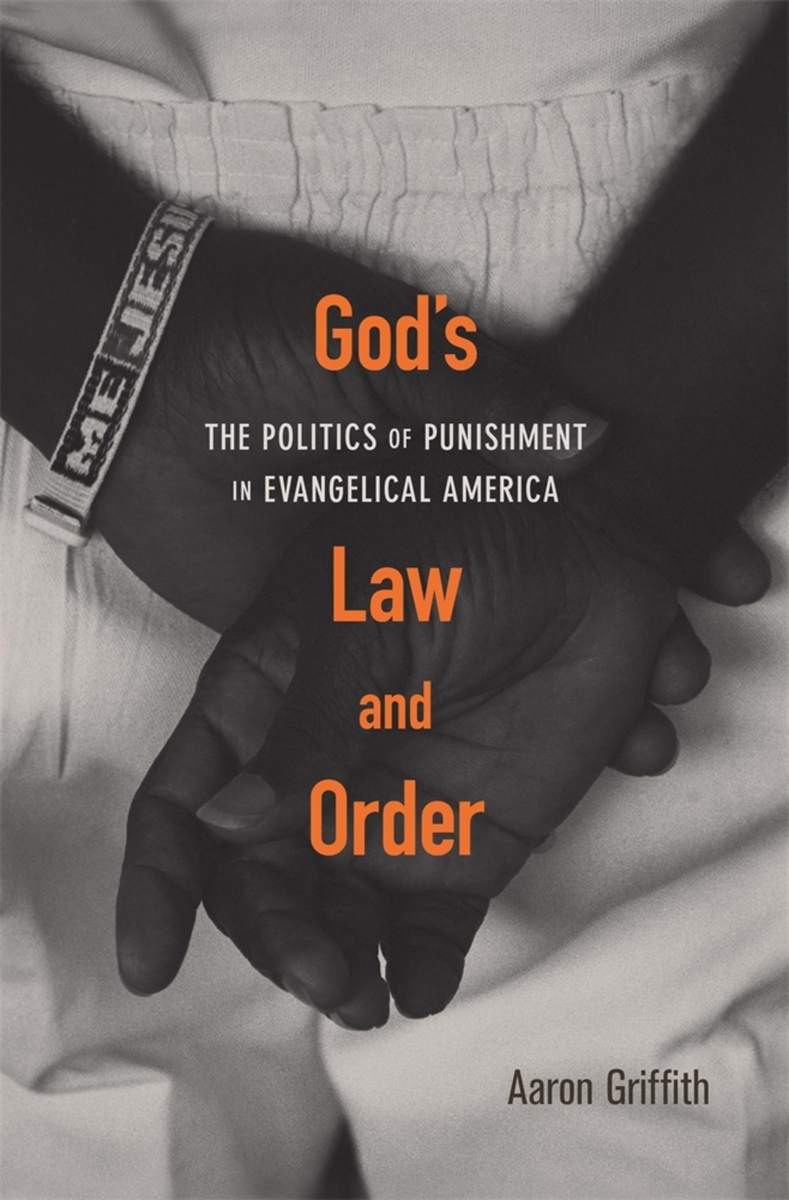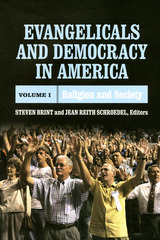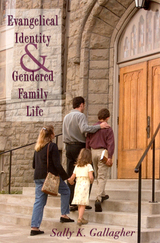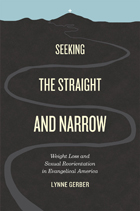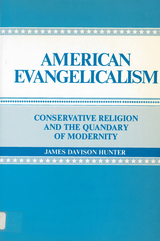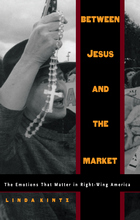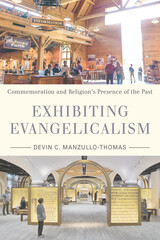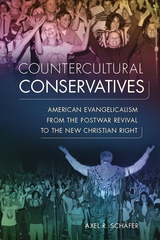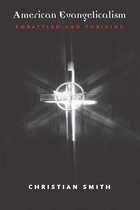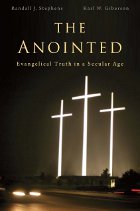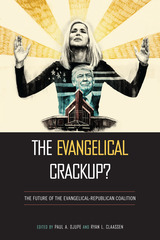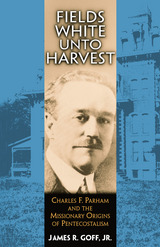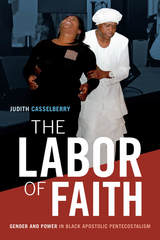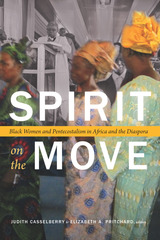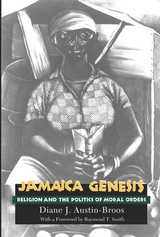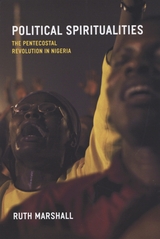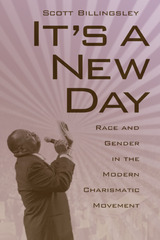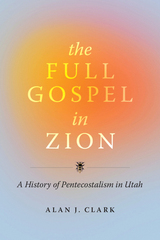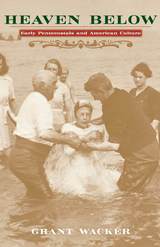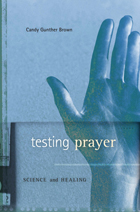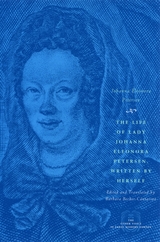Evangelicals, it would seem, are everywhere. Even prison. Aaron Griffith offers an important clarification regarding this tradition and its uniquely American expression as seen in the religious history of mass incarceration…In six wonderfully exhaustive chapters and a conclusion worth the price of the book alone, Griffith details the evolution of evangelical involvement in helping to see ‘crime as a sacred national issue’ while charting a middle path between a punitive or progressive paradigm.
-- Jeffrey A. VanDerWerff Religious Studies Review
Engrossing and much-needed…It is a sprawling story, not one easily told, but Griffith handles the material with aplomb, capably weaving together a variety of source materials and perspectives into an immensely readable account. This is surefooted scholarship.
-- Shawn Francis Peters Journal of American History
Griffith paints a challenging portrait of the relationship between white evangelicalism and the state’s mechanisms for punitive justice.
-- Michael B. Crosby Anabaptist Witness
Superb…Griffith calls for a new direction on the part of evangelicals who feel the pull of law-and-order politics.
-- David Swartz Anxious Bench
If Griffith’s book prompts evangelical believers to apply the gospel not only to individuals in prison but also to the structure of the prison system itself, that would undoubtedly be a good thing. And maybe in the process, as Griffith suggests, the gospel will induce repentance not only among those behind bars but also among some evangelicals who voted for the policies that put so many there in the first place.
-- Daniel K. Williams Christianity Today
Traces the connection between the revival of evangelical Christianity in the second half of the twentieth century and the accompanying rise in law-and-order politics…Fascinating.
-- David Schultz Criminal Law and Criminal Justice Books
A stunning work that shakes up our preconceived notions of evangelicalism and criminal justice. It is a must-read for any person of faith who longs to see more compassionate and more just responses to crime in our nation.
-- C. Christopher Smith Englewood Review of Books
Accurately centers the complicity of evangelicals in the development of the modern justice system while also acknowledging how evangelicals have been ‘pioneers in humanitarian engagement with modern prison life’ through efforts like prison ministry.
-- Sam Heath Equal Justice USA
Paints a detailed picture of the social and political context from which evangelical law and order theology emerged and became intertwined with the broader American political landscape. Theologians, criminologists, prison ministers and chaplains, and criminal justice activists will benefit from Griffith’s research as it provides historical nuance, success stories, cautionary tales, and ultimately hope that evangelical preoccupation with crime, punishment, and ‘lawbreakers’ can be converted into a powerful force that redeems the lives and communities affected by American mass incarceration.
-- Shari C. Mackinson Journal of Law and Religion
Essential reading for anyone interested in the cultural context for the War on Crime…This timely book documents the paradoxical ways that evangelicalism has helped propagate and justify the punitiveness that fuels mass incarceration, while simultaneously and somewhat more unexpectedly, including pockets of reformers who genuinely sought to improve the lives (and not just the souls) of persons convicted of crimes…Many comparisons of relevance to the modern political moment are evident throughout Griffith’s gripping account of the history of evangelicalism.
-- Justin Marceau Law and History Review
If the American public is finally waking up to its decades-long addiction to racialized mass incarceration, evangelical Christians now have a chronicler of the depth of their own complicity with the racist carceral binge…Both a readable account of American cultural history and a valuable opportunity for conservative Protestantism to reckon with some of the cultural skeletons in its own closet…Evangelical Christianity, including the Anabaptists on the edges of the movement, will have plenty to ponder after their encounter with this important work of history.
-- Robert Brenneman Mennonite Quarterly Review
Plumbs the depths of how evangelicalism’s rise in the mid-twentieth century overlapped with and connected to the expansion of the criminal punishment system…On this point Griffith is insightful and unflinching: reinstituting a robust criminal justice system was a frontline issue for conservative evangelicals because the rending of cultural norms was terrifying.
-- Justin R. Phillips Other Journal
Few American voting blocs stand out in terms of political influence as much as white evangelical Christians. They are keystone supporters of the Republican Party and conservative policies whose interests—as a result of this group’s size and mobilization substantially affect both local and national politics…An important contribution to the study of religion and politics in America and the American criminal legal system.
-- Andreas Kuersten Religion
Griffith explores how evangelicals have overlooked systemic racial inequalities and disparities that drove their approach to crime and punishment.
-- Yonat Shimron Religion News Service
Griffith demonstrates the connections between two spheres rarely discussed: American evangelicalism and the modern prison system…An illuminating examination of evangelical identity through the lenses of crime, punishment, justice, and redemption.
-- Jesse M. Payne Themelios
Griffith traces Evangelical Christians’ diverse engagements with prison ministries, criminal justice reform, and mass incarceration through the 20th century…Griffith carefully chronicles how Evangelical prison ministries' stress on personal responsibility and conversion often blinded them to the ways that economic inequality and racial injustices in the system were also factors in the growing prison population. This is an important book on American religious history.
-- Choice
In God’s Law and Order, Griffith connects the simultaneous rise of evangelicalism and mass incarceration, illuminating the way religious leaders played a central role in shoring up support for devastating punitive programs. Carefully researched and persuasively argued, Griffith’s rich history makes enormous contributions to our understanding of politics and culture in modern America.
-- Elizabeth Hinton, author of From the War on Poverty to the War on Crime: The Making of Mass Incarceration in America
Considering ongoing clashes over incarceration, social and criminal justice, and race, God’s Law and Order couldn’t be more timely. With a balanced and sympathetic touch, Griffith reveals the surprising extent to which law and order concerns have not just driven evangelicalism’s public engagement since the mid-twentieth century, but also stirred its passions for ministry and reform. This brilliantly crafted and beautifully written work forces us to reevaluate the origins of the religious right and adopt a wider purview when trying to make sense of evangelicalism’s political ascent and present course of action. This book deserves—indeed, demands—a wide readership.
-- Darren Dochuk, author of Anointed with Oil: How Christianity and Crude Made Modern America
Griffith’s account of how modern evangelicalism and the carceral state came of age together is nothing short of pathbreaking. Ranging across time and region with unusual sensitivity and keen insight, he weaves a gripping narrative, full of surprising turns and unintended consequences. The connections between past and present jump off these pages; make no mistake, the story that unfolds in God’s Law and Order is far from over.
-- Heath W. Carter, author of Union Made: Working People and the Rise of Social Christianity in Chicago
An outstanding contribution to religious history and the history of criminal justice. Griffith offers a deeply researched, limpidly written, and exceedingly well balanced account of the surprisingly complex involvement of white evangelicals with issues of criminal justice, prison ministries, and prison reform. His compelling narrative reveals persistent ambiguities—genuine concern for prisoners, intermittent concern for prison reform, and general lack of awareness about issues of race in criminal justice. I am not aware of anything that comes even close to the sophistication of Griffith’s treatment of this subject.
-- Mark Noll, author of A History of Christianity in the United States and Canada
